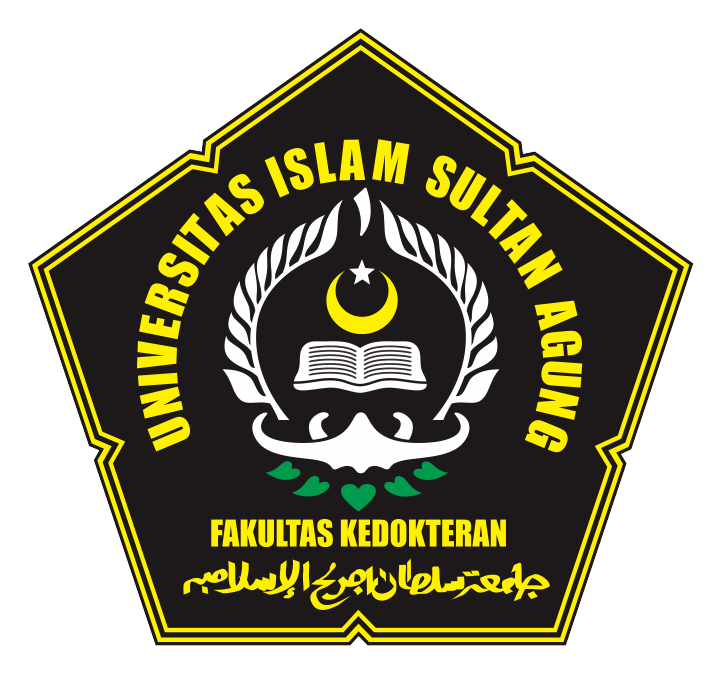M. Jannah,1 * T. Nasihun,T. Sumarawati1
1 Department of Biomedical Sciences, Medical Faculty, Sultan Agung Islamic University Semarang
Jl. Kaligawe KM 4 Semarang 50012 Telp (+6224) 6583584 Fax (+6224) 6594366 Semarang
*Corresponding author email: muliatul.jannah@gmail.com - Indonesia
The Effect of Fasting on the Concentration of Enzimatic Antioxidants (Superoxide Dismutase and Glutathione Peroxidase) in Rats
Â
Introduction: Consumption of excessive calories can increase the incidence of degenerative diseases mediated by ROS. Caloric restriction, have been shown to increase levels of antioxidants superoxide dismutase (SOD) and Gluthatione Peroxidase (GPx). Fasting like Ramadan fasting (FLRF) is a form of calorie restriction, but its effect on levels of SOD and GPx remains unclear.
Objectives: to investigate the effect of fasting on levels of SOD and GPx.
Methods: in a post-test only control group design, sample of 24 rats Sprague Dawley Rats aged 3-month-old, weighing 250-300 grams, were randomly divided into 4 groups. Group 1 (P-70), 2 (P-100), and 3 (P-140) were fasted for 6 hours/day, each group received of 70%, 100% and 140% calories respectively. Group 4 (C-AL) received 100% calories, ad libitum. Day 16 blood was taken and levels of SOD and GPx were determined by ELISA. Data were analyzed using one-way ANOVAs, followed by post hoc LSD tests, p<0.05 was considered statistically significant.
Results: the results showed that the levels of SOD and GPx occur significant differences between the groups, p = 0.000. The test results post hoc SOD (318.64) and GPx (89.16) group P-70, compared with group C-AL (278.60 and 57.20) was significantly higher (p = 0.00). SOD and GPx P-70 group compared with the group P-140 (92.03 and 48.79), significantly higher (p = 0.00). Compared with group P-100 (296.70 and 75.71) SOD and GPx in group P-70 was significantly higher, p = 0.000.
Conclusion: Fasting with calorie intake of 70% and 100% for 15 days can increases levels of SOD and GPx in male rats.
Keywords: fasting; caloric restriction; SOD; GPx
- Balitbangkes. (2013) Riskesdas. In: RI KK. ed. Jakarta.
- Baynes, M.H.D., 2003, Glucose Homeostasis and Fuel Metabolism, In: Crowe L, ed. Medical Biochemistry, England: Harcourt Brace and Company Ltd : 243-266.
- Bordone and L.G., 2005, Calorie Restriction, SIRT1 and Metabolism: Understanding Longevity. Molecular Cell Biology: 6.
- Guyton, A.C dan Hall, J.E., 2006, Textbook of Medical Physiology, 11th ed., Elsevier Saunders, Philadelphia.
- Heilbronn, E.R., 2003, Calorie restriction and aging: review of the literature and implications for studies in humans. Am J Clin Nutr;78:361-369.
- Jayrone, M.S, Parimal, C., 2012, Attenuation of Tissue Oxidative Stress by Dietary Restriction in Rats on Simulated Microgravity. Annals of Clinical & Laboratory Science: 42(2).
- Kefer JC, Agrawal A, Sabanegh E. 2009, Role of antioxidant in the treatment of male infertility. International journal of Urology; 16, 449 – 57
- Khaled, T.KeA., John, F., Trepanowski., Stephen, R.S., Zohra, Ghlissi., Hanene, Ghozzi., Liwa, Masmoudi., Kamel, Jammoussi., Ahmed, Hakim., 2011, Effects of Ramadan Fasting on Biochemical and Anthropometric Parameters in Physically Active Men. Asian Journal of Sports Medicine.,2(3):134-144.
- Kusumah, Indra., 2007Diet Ala Rasulullah. Jakarta:Qultum Media, 68.
- Lahdimawan., Ardik, M., Rasjad, I., Sumarno, R.P.,2013, Effect of Ramadan Fasting On Classically Activated, Oxidative Stress and Inflammation of Macrophage. IOSR Journal Of Pharmacy, 3(4):14-22.
- Li, Y.T., 2013. Analysis of Biomarkers of Caloric Restriction in Aging Cells. Methods Mol Biol, 1048.
- Martin, M.R.d.C., 2013, Mitochondrial Metabolic Reprogramming Induced by Calorie Restriction. Antioxidants & Redox Signaling: 19(3).
- Meydani., Mohsen., M, Band., S, Epstein.,S, Roberts., 2011, The Effect of Caloric Restriction and Glycemic Load on Measures of Oxidative Stress and Antioxidants in Human: Results From the CALERIE Trial of Human Caloric Restriction. Nutr Health Aging, 15(6):456–460.
- Nix, S., 2009, Digestion, Absorption, and Metabolism Williams' Basic Nutrition and Diet Therapy, Canada Mosby Inc :63-77.
- Nix, S., 2009, Energy Balance Williams' Basic Nutrition & Diet Therapy 13th ed. Canada: Mosby Inc:79-91.
- Noori, S., 2012, An Overview of Oxidative Stress and Antioxidant Defensive System. Open Access Scientific Reports:1(3).
- Panel, ARR., 2007, Guidelines for the Housing of Rats in Scientific Institutions, Sidney.
- Rahman, Khalid., 2007, Studies on Free Radicals, Antioxidants, and Co-Factors, Clinical Interventions in Aging.,2:219–36.
- Swinburn, IC., BA., Seidell., and James., 2004, Diet, nutrition and the prevention of excess weight gain and obesity,Public Health Nutrition.,7(1A):123–146.
- Trepanowski, John., 2010, The impact of religious fasting on human health. Nutrition Journal, 9:57.
- Ugochukwu, N.H., Namory, D.B., Mary, E., Antwi., 2004, The Effects of Dietary Caloric Restriction on Antioxidant Status and Lipid Peroxidation in Mild and Severe Streptozotocin-induced Diabetic Rats. Clinica Chimica Acta, 348:121–129.
- Varady, K.A. 2011, Intermittent versus daily calorie restriction: which diet regimen is more effective for weight loss? Obesity reviews : 12.
 Copyright (c) 2016 Sains Medika : Jurnal Kedokteran dan Kesehatan
Copyright (c) 2016 Sains Medika : Jurnal Kedokteran dan Kesehatan

This work is licensed under a Creative Commons Attribution 4.0 International License.
